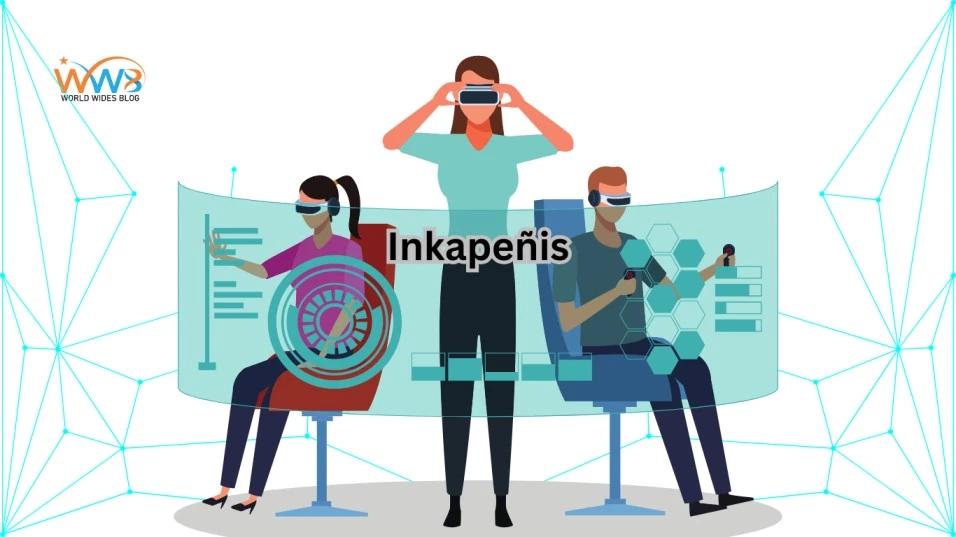Have you ever heard of “Inkapeñis”? If not, you’re in for a fascinating journey into a term that has begun to catch the attention of many, even beyond its origins. Inkapeñis isn’t just a word; it’s a concept rich in cultural significance and history, reflecting deep-rooted traditions. In this guide, we’ll delve into what Inkapeñis is, where it comes from, and why it’s increasingly becoming a topic of interest.
The Cultural Significance of Inkapeñis
Historical Background
To truly understand Inkapeñis, we need to look back at its origins. The term itself steeped in history, representing an element of cultural expression passed down through generations. Over the years, Inkapeñis has evolved, but its core meaning remains a symbol of identity and heritage.
How Inkapeñis Fits into Cultural Traditions
Inkapeñis plays a pivotal role in the traditions of the community where it originates. It’s not just a word or object but an embodiment of values, beliefs, and the way of life. Whether used in ceremonies, celebrations, or daily life, Inkapeñis holds a special place in the hearts of those who cherish their culture.
The Symbolic Meaning of Inkapeñis
Beyond its practical applications, Inkapeñis carries a deep symbolic meaning. It represents continuity, resilience, and the connection between the past and present. Inkapeñis remind many of their origins and the importance of preserving their cultural identity.
Types of Inkapeñis
Different Forms and Variations
It isn’t a one-size-fits-all concept. Depending on the region or community, it can take various forms. Some might associate it with physical artifacts, while others see it as an idea or practice. This diversity in interpretation adds to the richness of Inkapeñis.
Regional Differences
The way understood and practiced can vary widely from one region to another. Local customs, geography, and history shape these differences, making them multifaceted.
The Evolution of Inkapeñis Over Time
Like all cultural elements, Inkapeñis has evolved. What it meant a hundred years ago might differ from what it represents today, yet its essence remains intact. Understanding this evolution helps us appreciate the dynamic nature of cultural traditions.
The Process of Creating Inkapeñis
Materials Used:
Creating Inkapeñis involves specific materials often chosen for their cultural significance and availability. These materials may vary depending on the type of Inkapeñis being made, but they typically include natural resources that hold symbolic value.
Step-by-Step Guide to Creating Inkapeñis:
- Gather Materials: Begin by collecting the necessary materials, ensuring they are high quality and culturally appropriate.
- Prepare the Base: Depending on the form of Inkapeñis, this might involve shaping, carving, or weaving the primary material.
- Incorporate Details: Add intricate details that reflect traditional designs or personal touches, carefully following cultural guidelines.
- Final Touches: Complete the creation with finishing touches, ensuring that the Inkapeñis is functional and aesthetically pleasing.
- Blessing or Dedication (optional): Some traditions include a ceremonial blessing or dedication as the final step.
The Role of Craftsmanship in Inkapeñis:
Craftsmanship is crucial in creating Inkapeñis, requiring skill, knowledge, and attention to detail. The artisans who make Inkapeñis are often highly respected in their communities, as they preserve and pass on important cultural traditions through their work.
Inkapeñis in Modern Times
The Resurgence of Interest in Inkapeñis
In recent years, there has been a resurgence of interest in Inkapeñis. This renewed attention is driven by a desire to reconnect with cultural roots and preserve traditions that might otherwise be lost in the fast-paced modern world.
How Inkapeñis Is Celebrated Today
Today, It is celebrated in various ways, from festivals and events to everyday practices. These celebrations honor the past and keep the tradition alive and relevant for future generations.
Integration into Contemporary Culture
Inkapeñis has found its place in contemporary culture, blending the old with the new. Whether through art, fashion, or daily life, Inkapeñis continues to inspire and influence modern trends.
The Impact of Inkapeñis on Society
Social and Communal Influence
Inkapeñis isn’t just a personal or family tradition; it has a broader social impact. It brings communities together, fostering a sense of belonging and shared identity. Through Inkapeñis, people connect on a deeper level, reinforcing their cultural bonds.
The Role of Inkapeñis in Festivals and Events
Festivals and events are where Inkapeñis truly shines. These gatherings are a time to celebrate the tradition, pass it on to younger generations, and share it with others. The role of Inkapeñis in these events is crucial in maintaining the community’s cultural fabric.
How Inkapeñis Brings Communities Together
In a world where individualism is on the rise, Inkapeñis serves as a reminder of the importance of community. It’s a tradition that encourages collective participation, bringing people together to celebrate their heritage.
Inkapeñis and Art
Artistic Representations of Inkapeñis
Artists have long been inspired by Inkapeñis, incorporating it into their work in various forms. Whether through painting, sculpture, or digital art, Inkapeñis is a powerful muse, reflecting the artist’s interpretation of cultural identity.
Famous Artists Who Incorporate Inkapeñis in Their Work
Some artists have made a name for themselves by focusing on Inkapeñis. Their work not only preserves the tradition but also brings it to a global audience, showcasing the beauty and significance of Inkapeñis in the world of art.
How Inkapeñis Influences Modern Art Forms
The influence of Inkapeñis extends beyond traditional art forms. It has inspired modern and contemporary art, leading to innovative expressions that blend tradition with modernity. This cross-pollination of ideas ensures that Inkapeñis remains a vibrant part of the artistic landscape.
The Future of Inkapeñis
Predictions for the Next Decade
As we look to the future, it’s clear that Inkapeñis will continue to evolve. Experts predict that while the core elements of Inkapeñis will remain, new interpretations and adaptations will emerge, ensuring that the tradition stays relevant in a changing world.
Potential Changes and Adaptations
Change is inevitable, and Inkapeñis is no exception. Future adaptations might include new materials, methods, or meanings, reflecting the dynamic nature of culture. These changes will not diminish the tradition but enrich it, adding new layers of significance.
The Role of Technology in the Evolution of Inkapeñis
Technology is playing an increasingly important role in the evolution of Inkapeñis. From digital art to virtual celebrations, technology is helping to preserve and spread the tradition, making it accessible to a global audience.
Global Influence of Inkapeñis
How Inkapeñis Is Perceived Worldwide
Inkapeñis has begun to capture the attention of people worldwide. Its rich history and cultural significance make it an intriguing subject for those interested in global traditions. As more people learn about Inkapeñis, its influence continues to grow.
The Spread of Inkapeñis Outside Its Origin
As Inkapeñis gains international recognition, it is spreading beyond its original boundaries. This cultural exchange enriches the originators and those who adopt and adapt the tradition, leading to a broader understanding and appreciation of Inkapeñis.
Cultural Exchange and Influence
Inkapeñis is more than just a tradition; it’s a tool for cultural exchange. As it spreads to new regions and communities, it fosters a greater understanding between cultures, breaking down barriers and building bridges.
Common Misconceptions About Inkapeñis
Myths vs. Reality
Like many cultural traditions, Inkapeñis is subject to misconceptions. These myths can distort the true meaning of the tradition, leading to misunderstandings. By debunking these myths, we can gain a more transparent, more accurate understanding of Inkapeñis.
How to Debunk Common Inkapeñis Myths
To set the record straight, addressing common myths about Inkapeñis is essential. Whether it’s about its origins, purpose, or significance, debunking these myths helps preserve the tradition’s integrity.
Understanding the True Nature of Inkapeñis
By peeling back the layers of myth and misconception, we can better understand the true nature of Inkapeñis. This understanding is crucial for anyone interested in the tradition, whether as a practitioner, scholar, or enthusiast.
The Importance of Preserving Inkapeñis
Efforts to Keep the Tradition Alive
Preserving Inkapeñis is a collective effort that involves communities, organizations, and individuals. Various initiatives are in place to ensure this tradition is not lost but continues to thrive for future generations.
Organizations Dedicated to Inkapeñis Preservation
Several organizations are dedicated to preserving Inkapeñis. These groups work tirelessly to document, promote, and protect the tradition, ensuring it remains a vibrant part of cultural heritage.
How You Can Contribute to Preserving Inkapeñis
You don’t have to be an expert to contribute to the preservation of Inkapeñis. Whether through participation, education, or simply spreading awareness, everyone can play a role in keeping this tradition alive.
Inkapeñis in Literature
References to Inkapeñis in Books and Poems
Inkapeñis found its way into literature, where it often used as a symbol of cultural identity and continuity. Writers have drawn on the rich imagery and meaning of Inkapeñis to create influential literary works.
How Inkapeñis Has Inspired Writers
Writers, like artists, have been inspired by Inkapeñis. This inspiration has led to stories, poems, and essays that deeply explore the tradition and offer new perspectives on its significance.
Famous Literary Works Featuring Inkapeñis
Some famous literary works have featured Inkapeñis as a central theme. These works highlight the tradition’s importance and bring it to a broader audience, ensuring that Inkapeñis continues to inspire.
Challenges Facing Inkapeñis Today
Modern Threats to the Tradition
Like many cultural traditions, Inkapeñis faces several modern threats. Globalization, commercialization, and cultural homogenization all pose risks to the tradition, making it more critical than ever to work toward its preservation.
How Globalization Affects Inkapeñis
Globalization can have both positive and negative effects on Inkapeñis. While it can spread and recognize the tradition, it can also dilute its significance, losing authenticity.
Ways to Overcome These Challenges
Overcoming the challenges facing Inkapeñis requires a concerted effort. This can involve education, advocacy, and the promotion of the tradition in ways that respect its authenticity while adapting to modern times.
Celebrating Inkapeñis: Festivals and Events
Major Events Dedicated to Inkapeñis
Inkapeñis is celebrated through various festivals and events. These occasions honor the tradition, educate others, and pass it on to the next generation.
How People Celebrate Inkapeñis Around the World
Around the world, people celebrate Inkapeñis in unique and diverse ways. These celebrations reflect the tradition’s adaptability, showing how it can be embraced by different cultures while maintaining its core values.
Participating in Inkapeñis Celebrations
If you’re interested in experiencing Inkapeñis firsthand, participating in a celebration is a great way to do so. Whether you’re an observer or an active participant, these events offer a deep dive into the tradition.
Conclusion
Inkapeñis is more than just a word; it symbolizes cultural identity, continuity, and resilience. As explored in this guide, Inkapeñis holds deep significance for those who practice and cherish it. While it faces challenges in the modern world, the future of Inkapeñis looks bright, with efforts underway to preserve and promote this unique tradition. Whether you’re new to Inkapeñis or already familiar with it, there’s always more to learn and appreciate about this rich cultural heritage.
FAQs
What is Inkapeñis?
- Inkapeñis is a term that represents a cultural tradition or concept deeply rooted in a specific community’s history and practices. Its exact meaning can vary, but it often symbolizes identity and heritage.
How did Inkapeñis originate?
- Inkapeñis originated from ancient practices and traditions passed down through generations. It has evolved but retains its core significance within the community.
Is Inkapeñis still relevant today?
- Yes, Inkapeñis remains relevant today, especially as people seek to reconnect with their cultural roots. It continues to celebrated and adapted in modern times.
How can I participate in Inkapeñis celebrations?
- You can participate in Inkapeñis celebrations by attending festivals, events, or cultural gatherings where the tradition is practiced. Engaging with the community and learning about the tradition is also a great way to get involved.
Why is it essential to preserve Inkapeñis?
- Preserving Inkapeñis is crucial for maintaining cultural diversity, ensuring that future generations can connect with their heritage, and fostering a sense of community and belonging.




